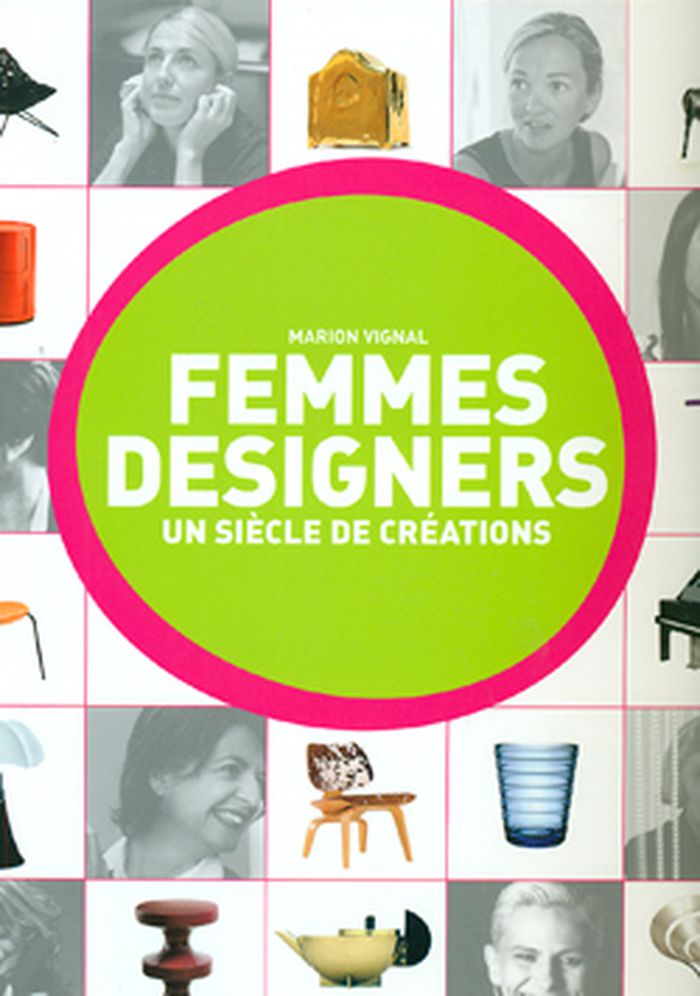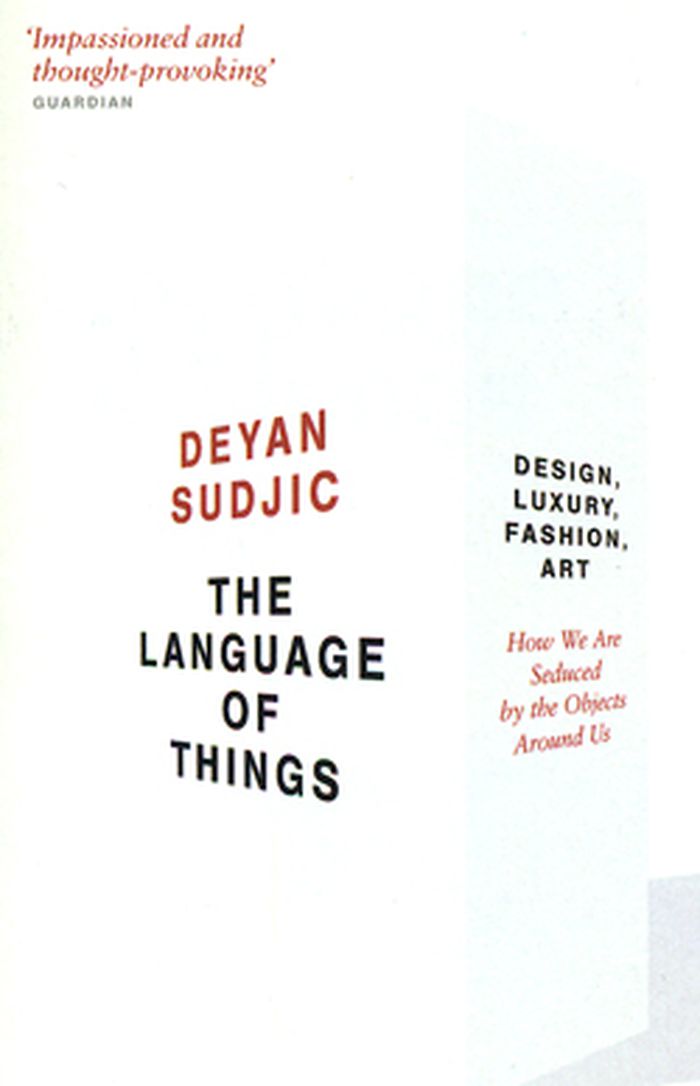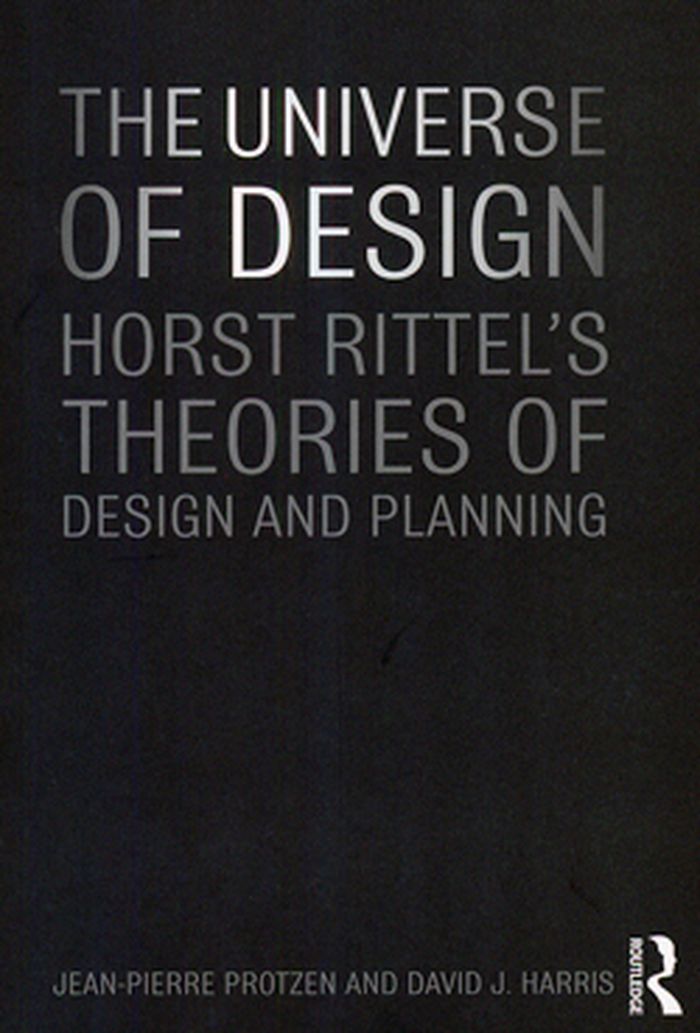Femmes designers
$89.95
(disponible sur commande)
Résumé:
Né à l'aube du XXe siècle, le design a grandi dans un monde masculin, celui de l'industrie, des ingénieurs et des architectes. Les femmes ont longtemps été les grandes absentes du secteur. Certaines ont pourtant joué un rôle clé dans l'histoire du mobilier et plus largement de l'habitat. Entre Rodin et Camille Claudel, on sait aujourd'hui faire la différence. Peut-on en(...)
Femmes designers
Actions:
Prix:
$89.95
(disponible sur commande)
Résumé:
Né à l'aube du XXe siècle, le design a grandi dans un monde masculin, celui de l'industrie, des ingénieurs et des architectes. Les femmes ont longtemps été les grandes absentes du secteur. Certaines ont pourtant joué un rôle clé dans l'histoire du mobilier et plus largement de l'habitat. Entre Rodin et Camille Claudel, on sait aujourd'hui faire la différence. Peut-on en dire autant des pièces de Le Corbusier et de Charlotte Perriand ? Près d'un siècle plus tard, elles occupent le premier plan. Créatrices indépendantes, éditrices, galeristes, commissaires d'expositions, elles se sont emparées de la discipline à tous les niveaux. De Marianne Brandt, icône du Bauhaus, à Zaha Hadid en passant par Andrée Putman ou Matali Crasset, cet ouvrage passe en revue, à travers plus de 300 documents, les plus grands noms du design, de l'Art Nouveau à aujourd'hui.
Théorie du design
Qu'est-ce que le design?
$69.95
(disponible sur commande)
Résumé:
Le premier livre sur l'évolution des objets et leurs liens avec l'histoire et la culture. Un long parcours, depuis la Grèce antique jusqu'au nouveau millénaire, pour comprendre l'univers du design. Dans cet ouvrage : les concepts de base, l'histoire, les écoles, les courants, les acteurs, le " monde " électronique.
Qu'est-ce que le design?
Actions:
Prix:
$69.95
(disponible sur commande)
Résumé:
Le premier livre sur l'évolution des objets et leurs liens avec l'histoire et la culture. Un long parcours, depuis la Grèce antique jusqu'au nouveau millénaire, pour comprendre l'univers du design. Dans cet ouvrage : les concepts de base, l'histoire, les écoles, les courants, les acteurs, le " monde " électronique.
Théorie du design
$29.95
(disponible sur commande)
Résumé:
Artists' lists shed uncover a host of unbeknownst motivations, attitudes, and opinions about their work and the work of others. Lists presents almost seventy artifacts, including 'to do' lists, membership lists, lists of paintings sold, lists of books to read, lists of appointments made and met, lists of supplies to get, lists of places to see, and lists of people who are(...)
Lists to-dos, illustrated inventories, collected thoughts, and other artists
Actions:
Prix:
$29.95
(disponible sur commande)
Résumé:
Artists' lists shed uncover a host of unbeknownst motivations, attitudes, and opinions about their work and the work of others. Lists presents almost seventy artifacts, including 'to do' lists, membership lists, lists of paintings sold, lists of books to read, lists of appointments made and met, lists of supplies to get, lists of places to see, and lists of people who are 'in.' At times introspective, humorous, and resolute, but always revealing and engaging, Lists is a unique firsthand account of American cultural history that augments the personal biographies of some of the most celebrated and revered artists of the last two centuries.
Théorie du design
$64.95
(disponible sur commande)
Résumé:
L'annuaire européen du design en ligne réalisé par l'Agence pour la promotion de la création industrielle devient tous les deux ans Panorama Design : Guide du design en Europe, un ouvrage coédité par l'APCI et les éditions Archibooks. Mais ce livre n'est pas seulement un annuaire professionnel bilingue (français et anglais), c'est aussi un guide pratique qui livre des(...)
Théorie du design
janvier 2009
Panorama design 2009/2010 : guide du design en Europe / European design guide
Actions:
Prix:
$64.95
(disponible sur commande)
Résumé:
L'annuaire européen du design en ligne réalisé par l'Agence pour la promotion de la création industrielle devient tous les deux ans Panorama Design : Guide du design en Europe, un ouvrage coédité par l'APCI et les éditions Archibooks. Mais ce livre n'est pas seulement un annuaire professionnel bilingue (français et anglais), c'est aussi un guide pratique qui livre des définitions de ce que l'on entend par design aujourd'hui et rassemble les adresses indispensables de la profession - organismes de promotion, organisations professionnelles, concours et prix internationaux, salons professionnels et manifestations. C'est un outil précieux qui s'adresse aux entreprises ayant recours au design et aux acteurs de l'innovation, agences de design, consultants, designers, étudiants.
Théorie du design
The language of things : design, luxury, fashion, art : how we are seduced by the objects around us
$10.99
(disponible sur commande)
Résumé:
We live in a world drowning in objects. But what do they tell us about ourselves? In this book, Design Museum Director Deyan Sudjic charts our relationship — both innocent and knowing — with all things designed. Brilliant and courageous, "The Language of Things" defines the visual vocabulary of our time and gives us a powerful new way of seeing the world. With up to one(...)
The language of things : design, luxury, fashion, art : how we are seduced by the objects around us
Actions:
Prix:
$10.99
(disponible sur commande)
Résumé:
We live in a world drowning in objects. But what do they tell us about ourselves? In this book, Design Museum Director Deyan Sudjic charts our relationship — both innocent and knowing — with all things designed. Brilliant and courageous, "The Language of Things" defines the visual vocabulary of our time and gives us a powerful new way of seeing the world. With up to one hundred colour illustrations throughout, this book itself is both a provocative and beautiful thing.
Théorie du design
Computer
$29.99
(disponible sur commande)
Résumé:
Computer covers many issues ignored by other histories of computing, which have focused on technology and the design and promotion of computers and their general reception. Here, Atkinson chronicles the changes in physical design of the computer and shows how these changes in design are related to changes in popular attitude. Atkinson is fascinated by how the(...)
Computer
Actions:
Prix:
$29.99
(disponible sur commande)
Résumé:
Computer covers many issues ignored by other histories of computing, which have focused on technology and the design and promotion of computers and their general reception. Here, Atkinson chronicles the changes in physical design of the computer and shows how these changes in design are related to changes in popular attitude. Atkinson is fascinated by how the computer has been represented and promoted in advertising. For example, in contrast to ads from the 1970s and ’80s, today’s PC is very PC—genderless, and largely status free. Computer also considers the role of the computer as a cultural touchstone, as evidenced by its regular appearance in popular culture, including the iconography of the space age, HAL from 2001: A Space Odyssey, James Bond’s gadgetry, and Stars War and Star Trek.
Théorie du design
$54.99
(disponible sur commande)
Résumé:
Inherently ephemeral and often overlooked, wallpaper had by the late twentieth century become a bit of a joke in the decorative arts. But over the past decade or so, a number of contemporary avant-garde artists have created installations with backdrops of specially designed wallpaper to explore themes such as warfare, racism, gender, and sexuality. Featured are(...)
Walls are talking: wallpaper, art and culture
Actions:
Prix:
$54.99
(disponible sur commande)
Résumé:
Inherently ephemeral and often overlooked, wallpaper had by the late twentieth century become a bit of a joke in the decorative arts. But over the past decade or so, a number of contemporary avant-garde artists have created installations with backdrops of specially designed wallpaper to explore themes such as warfare, racism, gender, and sexuality. Featured are wallpaper designs from more than thirty internationally renowned artists, including Damien Hirst, Sonia Boyce, Thomas Demand, Robert Gober, Abigail Lane, Francesco Simeti, and Niki de St. Phalle. Published to accompany exhibitions at the Whitworth Art Gallery in Manchester and the Victoria and Albert Museum in London.
Théorie du design
Design and truth
$28.95
(disponible sur commande)
Résumé:
From the ornate cathedrals of Renaissance Europe to the much-maligned Ford Edsel of the late 1950s, all products of human design communicate much more than their mere intended functions. Design holds both psychological and moral power over us, and these forces may be manipulated, however subtly, to surprising effect. In an argument that touches upon subjects as seemingly(...)
Design and truth
Actions:
Prix:
$28.95
(disponible sur commande)
Résumé:
From the ornate cathedrals of Renaissance Europe to the much-maligned Ford Edsel of the late 1950s, all products of human design communicate much more than their mere intended functions. Design holds both psychological and moral power over us, and these forces may be manipulated, however subtly, to surprising effect. In an argument that touches upon subjects as seemingly unrelated as the Japanese tea ceremony, Italian mannerist painting, and Thomas Jefferson’s Monticello plantation, Grudin turns his attention to the role of design in our daily lives, focusing especially on how political and economic powers impress themselves on us through the built environment.
Théorie du design
The comfort of things
$23.95
(disponible sur commande)
Résumé:
This book visits an ordinary street and looks into thirty households. It reveals the aspirations and frustrations, the tragedies and accomplishments that are played out behind the doors. It focuses on the things that matter to these people, which quite often turn out to be material things -- their house, the dog, their music, the Christmas decorations. The Comfort of(...)
The comfort of things
Actions:
Prix:
$23.95
(disponible sur commande)
Résumé:
This book visits an ordinary street and looks into thirty households. It reveals the aspirations and frustrations, the tragedies and accomplishments that are played out behind the doors. It focuses on the things that matter to these people, which quite often turn out to be material things -- their house, the dog, their music, the Christmas decorations. The Comfort of Things shows how much is to be gained when we stop lamenting what we think we used to be and focus instead on what we are now becoming. It reveals the forms by which ordinary people make sense of their lives, and the ways in which objects become our companions in the daily struggle to make life meaningful.
Théorie du design
$60.50
(disponible sur commande)
Résumé:
This book examines the theoretical foundations of the processes of planning and design. Horst Rittel studied the process of making plans and developed theories that are used in many fields today. From product design, architecture and planning to governmental agencies, business schools and software design, Rittel’s ideas are being used. This book collects previously(...)
The universe of design: Horst Rittel's theories of design and planning
Actions:
Prix:
$60.50
(disponible sur commande)
Résumé:
This book examines the theoretical foundations of the processes of planning and design. Horst Rittel studied the process of making plans and developed theories that are used in many fields today. From product design, architecture and planning to governmental agencies, business schools and software design, Rittel’s ideas are being used. This book collects previously unavailable work of Rittel’s within the framework of a discussion of Rittel’s theories and philosophical influences.
Théorie du design









